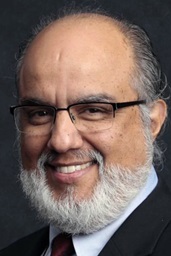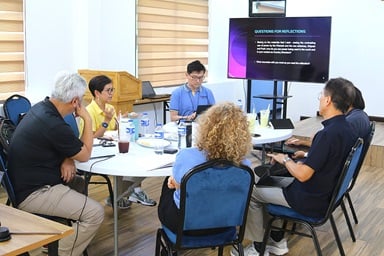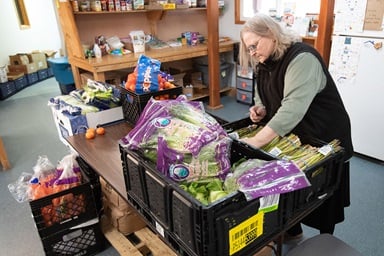Key points:
- A celebration for The Upper Room’s 90 years of spiritual encouragement and disciple-making took place Aug. 20-21 in Nashville, Tennessee.
- Current and past staff and editors, as well as members of the local church where the idea for The Upper Room devotional was born, gathered to give thanks for the global reach of the publication.
- Featuring content written by readers from around the world, the devotional “highlights the universal human experience,” said Lindsay Gray, executive editor for Upper Room editions.
A chorus of grateful voices resounded in the Upper Room Chapel on Aug. 20, joining together in celebrating 90 years of The Upper Room devotional.
The pocket-sized magazine is a fixture in churches, homes, prisons and care facilities, providing a source of hope for readers around the world. It is one of the longest continuously published daily devotional, according to The Upper Room.
“Now, more than ever, we believe in the mission of helping people create daily life with God and helping people deepen their faith,” said the Rev. Jeff Campbell, top staff executive of Discipleship Ministries and interim publisher of The Upper Room. “We’re just as excited about the future of The Upper Room as they were in 1935.
“It’s very humbling to be part of something so big and wonderful that so many people have worked on over these 90 years. It’s humbling to be a part of something so universally meaningful to people.”
The celebration was attended by current and former staff from various United Methodist agencies, as well as past Upper Room editors and others — including guests from the San Antonio, Texas, church where the idea for the devotional guide was born.
The event also recognized the readers from around the world who write The Upper Room’s ecumenical content.
The Upper Room “highlights the universal human experience,” said Lindsay Gray, executive director for Upper Room editions. “You hear a specific individual’s stories about something, and I may not have had that particular experience, but I can relate to the collection of feelings that are coming from that and the way that God is present in that.
“And we hear from people on a regular basis, ‘This was exactly what I needed to hear today,’ or, ‘This content today matched up perfectly with something my church is experiencing right now.’ And I think that speaks both to the presence of the Holy Spirit and also to the way that we have so much more in common than sometimes daily life points to, and that our conversations around faith are one of the places that we can share that together meaningfully.”
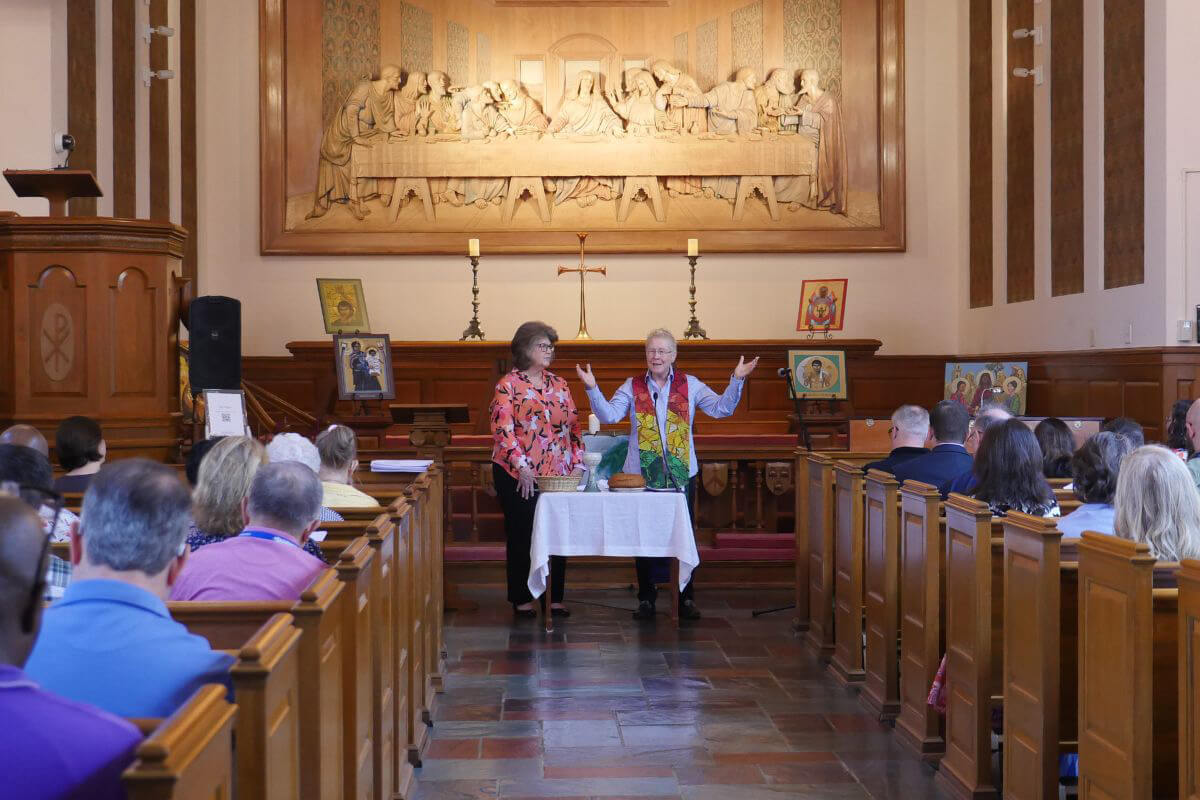
The Upper Room’s editorial process to select entries for publication includes many voices as well. The collective effort that goes into each issue has helped the publication maintain its quality and traditions.
“It really helps maintain a consistent style and theology and presence amongst the staff, and the way that we edit as a staff,” Gray said. “We’re looking for what makes sense to the most people, and we have various steps where we’re including multiple voices. That’s pretty special and unusual, I think, especially for a periodical to have that level of attention and care throughout the process.”
The Upper Room, by the numbers
- 90 years in print
- 1.5 billion devotionals printed; stacked end-to-end, they would reach around the world five times
- 17,000+ individual writers
- 30+ languages in print
- 100 countries
Celebratory gatherings took place Aug. 20-21 in Nashville.
“We want to celebrate the people that have come before us, and the work that they have made possible for us,” Gray said. “Ninety years is a big deal, and it also felt like a good time to just be celebrating that we’re still here, and that we hope we’re still going to be here for a long while to come.”
Participants included guests from Travis Park United Methodist Church in San Antonio, Texas, where the idea for The Upper Room originated in the 1930s with Frances Craig and Paul Kern. Craig and Kern envisioned a family resource that would strengthen the practice of daily prayer and Bible reading in homes.
That history has special significance for the Rev. Cynthia Engstrom, Travis Park’s senior pastor. “I grew up reading The Upper Room, so I was formed by The Upper Room, and now to be the pastor at Travis Park UMC, where it all began, is powerful,” she said.
“The power of The Upper Room has been the people sharing their stories of God at work in their lives. At Travis Park, many people who come to worship are from the margins of society and have powerful words of wisdom that we all need to hear because God is at work in their lives, too. Until we share our stories together, we can’t be whole as people or as the church.”
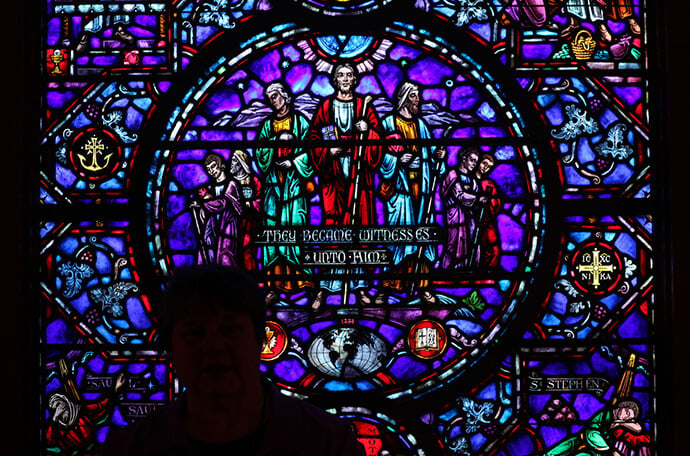
A special worship service in the Upper Room Chapel allowed time and space to reflect on the publication’s legacy. A liturgy, read by the Rev. Mary Lou Redding, longtime former editor of The Upper Room, and written by the Rev. Beth A. Richardson, dean emeritus of The Upper Room Chapel, recognized the founders of the devotional, those who prayed for its mission, the staff who’ve shaped it, its writers and its readers.
“We thank God for devotionals that arrived in the mail, (were) picked up in church lobbies, were delivered by plane or boat, or sent to an email inbox,” the liturgy stated. “All these readers are joined together as parts of the Body of Christ. Many languages, many stories, but all united in the love of Scripture and the calling to meet God every day.”
The Upper Room’s editorial team is anticipating what’s next for the publication. Campbell is considering expanded ways to “equip donors, writers and subscribers to be more of a part of The Upper Room.”
Subscribe to our
e-newsletter
As a self-sustaining nonprofit that operates without general church funds, The Upper Room is sustained by product sales, program offerings and generous contributions from donors.
While The Upper Room and the broader publishing industry have experienced significant financial challenges in recent years, The Upper Room’s leadership continues to take meaningful steps to ensure the long-term sustainability of The Upper Room’s ministries.
One of these steps was the announcement earlier this year of a price increase to a 1-year print subscription to The Upper Room — the first increase in nearly a decade. This change will allow The Upper Room to remain accessible and sustainable for generations to come.
“My hope and dream for The Upper Room is that we’re able to continue to maintain an authentic space for anyone who wants to come to the table to have (faith) conversations,” Gray said. “That feels more and more challenging, I think, in the way that society interacts these days. So, I hope that we can continue to facilitate that kind of a space for readers and writers.”
Buchanan is the lead member content creator for United Methodist Communications.
News media contact: Julie Dwyer at [email protected]. To read more United Methodist news, subscribe to the free UM News Digest.


